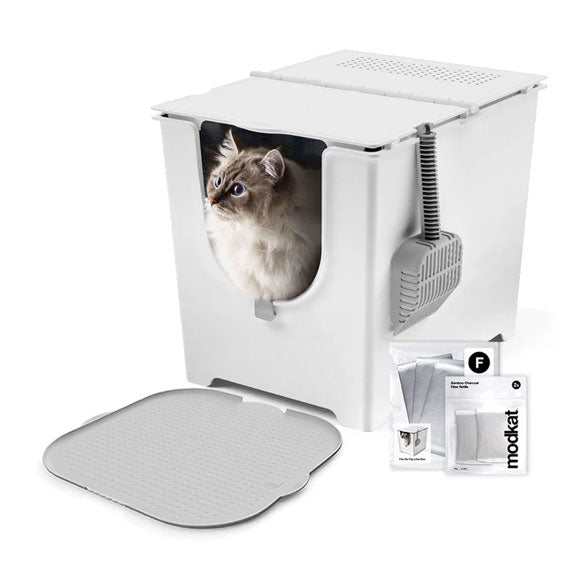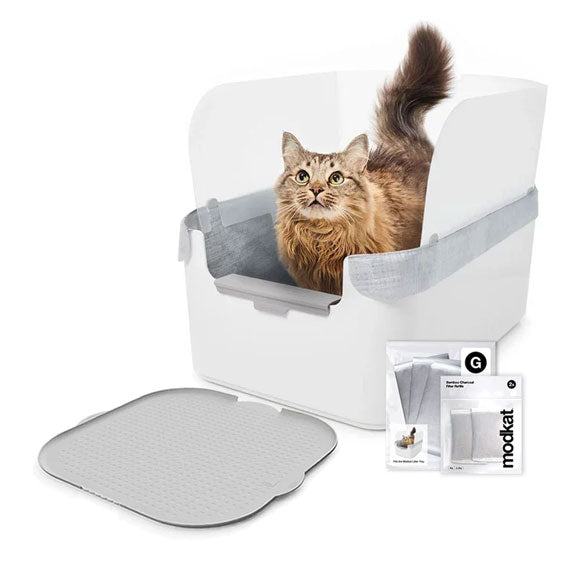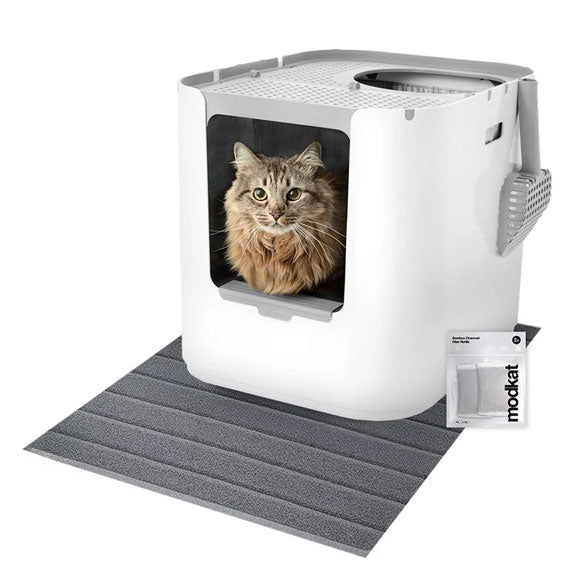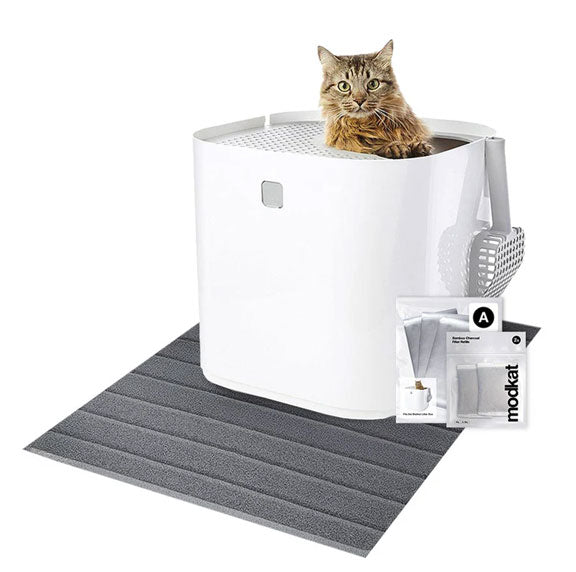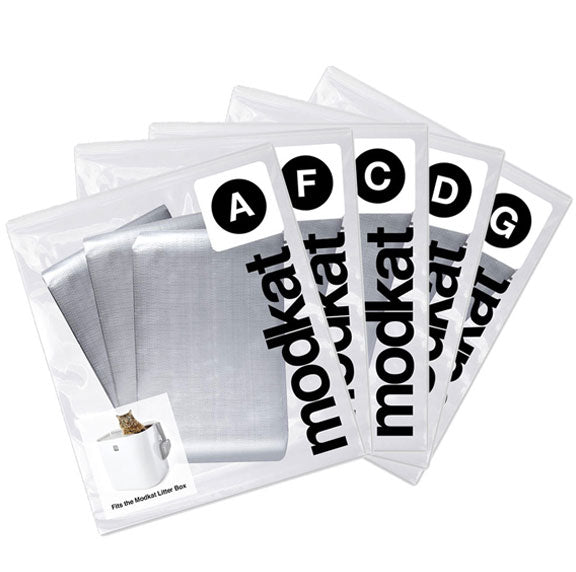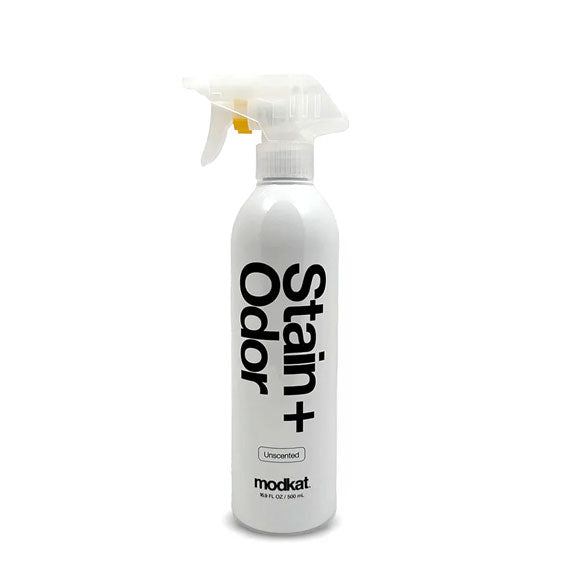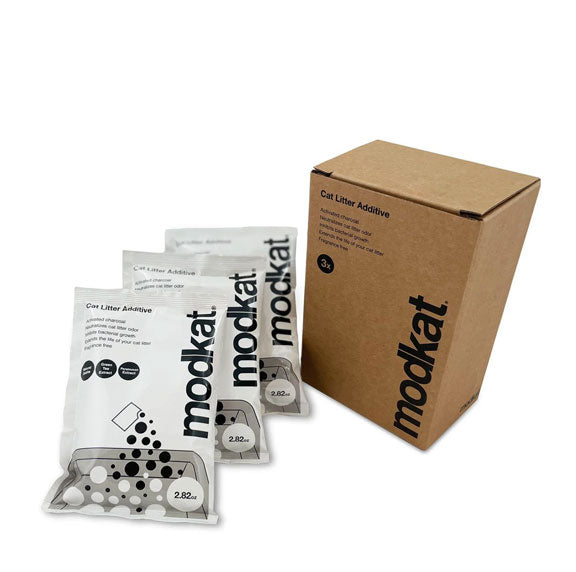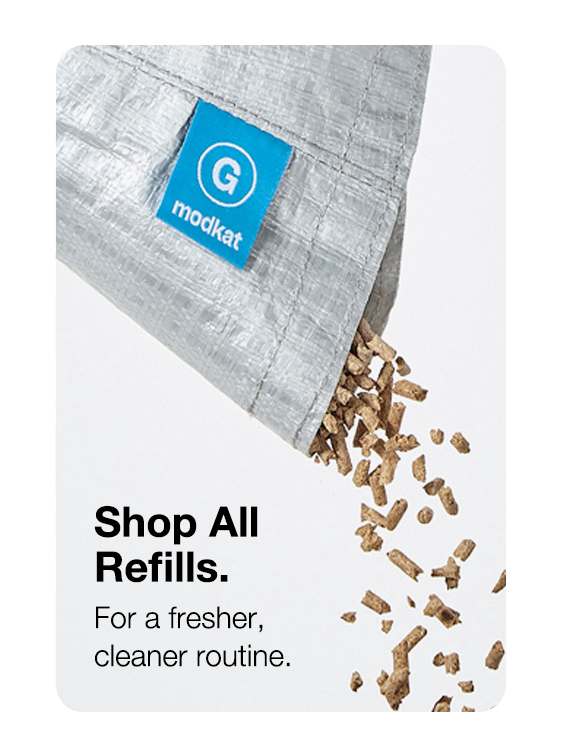20% off sitewide. Discount automatically applied.
20% off sitewide. Discount automatically applied.
Litter Boxes
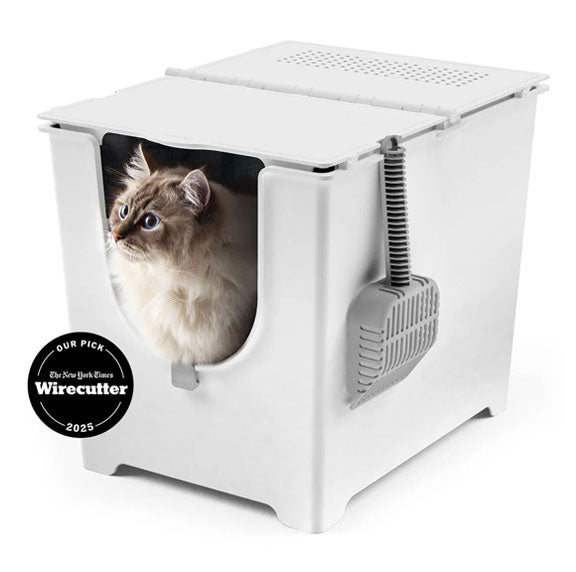
Modkat Flip
Front-Entry Litter Box
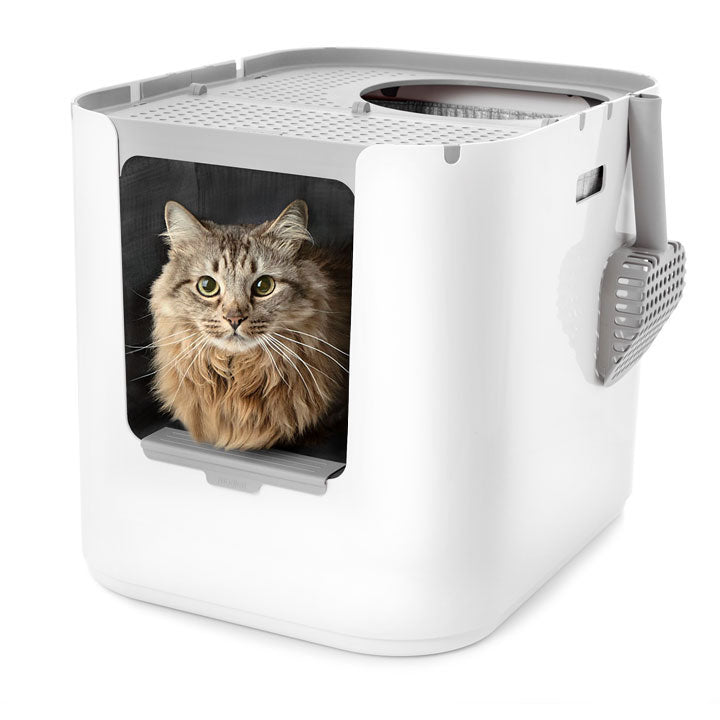
Modkat XL
Front/Top-Entry Litter Box
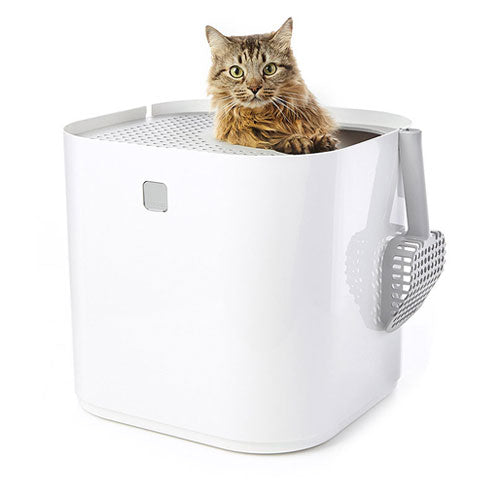
Modkat
Top-Entry Litter Box
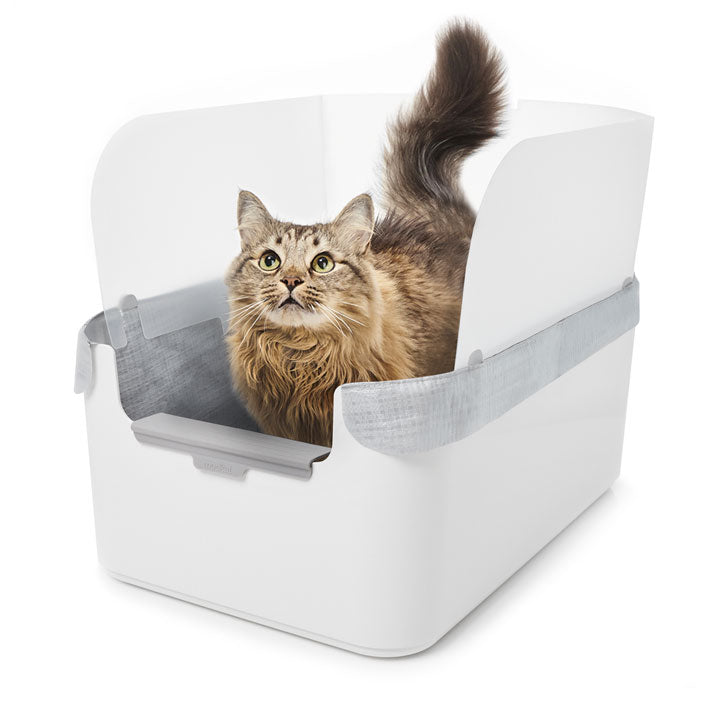
Modkat Tray
Open Litter Box
Bundles
Essentials
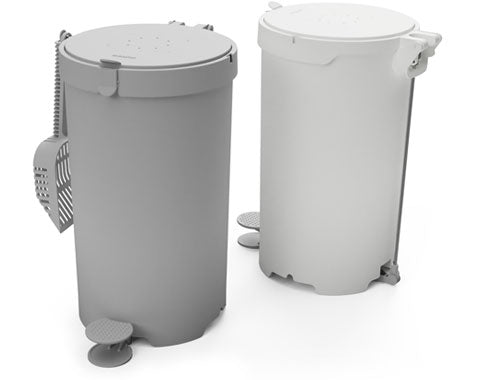
Litter Keeper
Two colors
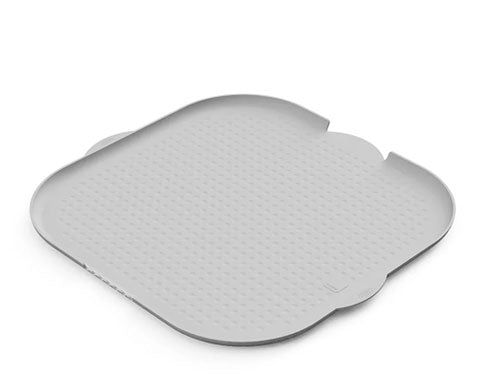
Litter Mats
Multiple styles, colors & sizes
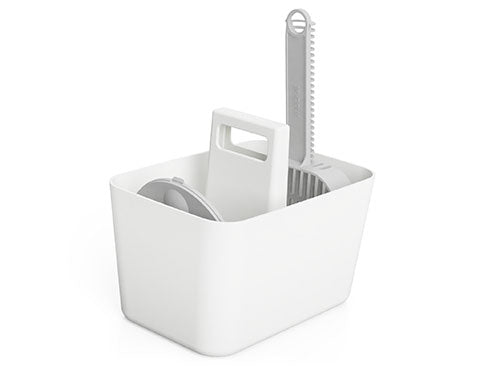
Tidy-Up Kit
Scoop holder & dustpan
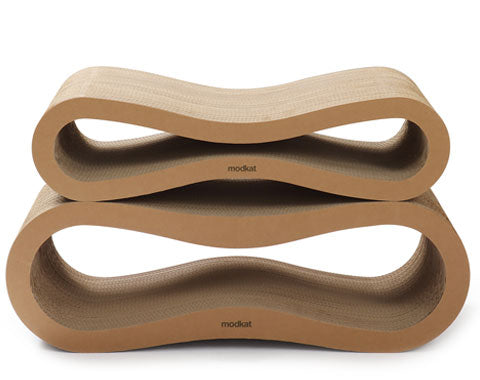
Lounge + Play
Scratchers & toys
Refills
Add description, images, menus and links to your mega menu
A column with no settings can be used as a spacer
Link to your collections, sales and even external links
Add up to five columns
Add description, images, menus and links to your mega menu
A column with no settings can be used as a spacer
Link to your collections, sales and even external links
Add up to five columns
Working from home with cats survival guide.
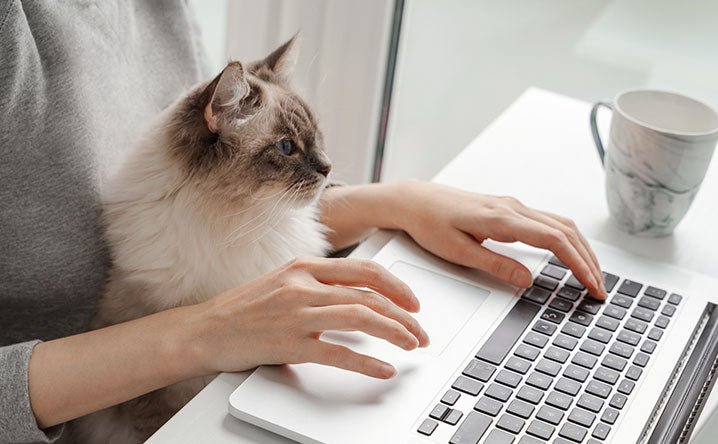
In the last few years, we've learned a lot about working from home.
For instance, we've discovered how to use new technologies and communication platforms. We've found out how to negotiate housework with office work. And we've learned how to navigate the challenges and delights of extra time with partners, roommates, or kids.
Working from home also lets you spend more time with your beloved pets. And that's a good thing for everyone.
Scientific research shows that owning a pet helps make people healthier and happier. Both dog people and cat people experience less anxiety and depression, lower rates of heart disease, and fewer allergies than their non-pet peers.
Interestingly, caregivers — who often experience incredible stress when they work from home — enjoy some of the most pronounced mental and physical benefits from owning a pet, especially when that pet is a cat.
Working from home with cats may be good for you, but it takes planning, skill, and organization to keep your home running harmoniously.
Here are our top tips for working from home with cats:
Play Before Work.
Get your priorities straight. It's play first, work later. A cat that has spent 10 minutes leaping, chasing, and hunting feathers on a string will be much less likely to demand your attention during an important Zoom call.
The benefits of regular playtime for cats.
Being active helps cats stay healthier, behave better, and live longer.
For a cat, play is work. Running, tumbling, jumping, or chasing a laser can expend a lot of energy; and solving a kitty puzzle or hunting for a hidden treasure can help feline minds stay healthy and sharp. An active play session can also burn off calories, helping chubby kitties to trim down their excess weight.
The mental health benefits are equally significant. Around 40% of house cats live with depression due to boredom. Just 30 minutes of exercise a day may reduce a cat's anxiety, eliminate destructive behaviors, and alleviate feline depression. Spending time with a domestic animal can also improve stress, anxiety, or depression in humans.
Perhaps the best benefit to feline exercise is the corresponding increase in longevity. Just one hour of playtime can lengthen your cat's life by four hours.
How to play with your cat.
Each cat has different tastes and preferences. One may love to chase shadows on the wall. Another may go crazy for catnip-stuffed mice. And still another pet may be a cat tree fanatic. Watch your cat carefully to determine how she likes to play.
Remember that cats are instinctive predators, so most of them enjoy anything that mimics natural prey. Any toy that can be stalked, pounced on, and dismembered will probably satisfy your little hunter.
How long should you play with your cat?
Aim for at least 30 minutes of active playtime each day. You don't want to pack all that activity into a single session though. A good rule of thumb is to play for a 10-minute stretch and then give your kitty plenty of time to wind down before you rev her up again.
Filling up your cat's toy chest.
What kind of toys do cats enjoy?
Cats need three kinds of toys — interactive toys, quiet-time toys, and toys they can entertain themselves with.
Interactive toys such as a bell ball or a ping pong ball require your presence to make them work. You can wind up an electronic mouse, set up a cat windmill, or drive your pet bonkers with a standard laser pointer.
Also furnish quiet entertainment options to help keep your cat occupied while you're working. Empty boxes, puzzle toys, and perches with exciting views out the window may help your pet stay off your lap while you're busy with office activities.
Some cats will grab a toy out of the basket and entertain themselves. You might look for things like the automatic rotating laser pointer, which has a 15-minute timer and can engage your pet without you having to lift a finger.
Give Your Cat His Own Space.
Cats need their personal space.
Yes, it's a stereotype that all kitties are snooty introverts who turn up their noses at offers of love. Plenty of cats dote on the attention and affection their owners lavish on them. But it's pure science that cats enjoy having the time and space to experience personal retreat. In fact, it's vital to their health.
In the wild, members of the felidae family (cats) are solitary hunters who form social groups. They are not like dogs and other pack animals that rely on a complex, interdependent social hierarchy for protection and survival. (A pride of lions is the only exception to this rule.)
Like their untamed cousins, domestic cats can form strong social bonds but will become aggressive if they aren't given space for solitude. You can set up a cat-friendly area of your home for your pet to retreat to. This area can be part of a spare bedroom or even just a corner of your living quarters.
If you are working with a tiny space, such as an apartment in a major urban area, you may want to create a vertical retreat center. Try a tall cat tree, some cat shelves, or even a cleverly designed bookcase to give your pet her own private penthouse above the fray.
Fill the space with accessories your cat loves, including something he can hide in. Add a blanket or cat bed, a food dish, a water source, and a litter box. Instruct your household — both humans and canine members — to leave the cat alone when he is in his special place.
Working at home with a cat will be infinitely easier if you set up a quiet getaway for your pet.
Make Sure Your Cat Has Enough Water & Food.
A famished cat is going to bug you. She won't care that you are logged in to the most important work meeting of your entire career. This girl's hungry!
Cat food is a dicey subject. Every cat lover fosters their own ideas about how often to feed a feline, what diet is best, and where the dishes should go in the house. At Modkat, we respect all scientifically valid, well-considered points of view on cat care and maintenance. You know your cat best.
Over time, however, we've learned some general truths about the feeding of cats, and we'd like to share them with you:
- Choose a quiet space. Generally, cats do not like to dine amongst children's backpacks, beside noisy washers, or in the middle of a busy hallway.
- Select the right bowl. A stainless steel bowl is easy to keep sparkling clean and safe for cats. You'll also want to choose a dish that's lead free and whisker friendly.
- Separate the bowls. Keep the food and water bowls apart. Give each cat his or her own bowl. And make sure the dog's food is located in a totally different spot. In fact, it's a good idea to put a cat's bowl in a place where the dog can't reach it.
- Feed enough, but don't overfeed. Most cats need 24-35 calories per pound per day. About 50% of those calories should come from protein and 30% from fat. Carbs need to bring up the rear. Senior cats, kittens, and cats with certain health issues may benefit from special diets. Talk with your cat-friendly vet or feline nutritionist to learn more about what nutrition plan may be right for your pet.
Working with a cat around will prove to be a lot simpler and quieter if said cat is well nourished.
Set a Routine.
Like most children, cats thrive on a routine. They like to know when it's playtime, naptime, and dinnertime.
Let's start with naptime. An adult cat typically sleeps 13-19 hours per day. They developed these habits before taking up with humans. In the wild, cats are both predators and prey so they have to be awake when their food is up and about but quiet and still when their predators are hunting.
Cats are crepuscular creatures, meaning they are most active at dawn and dusk. The rest of the day (and night) should be filled with quieter activities. A good schedule may look something like this:
7 am - Breakfast; playtime; visit the litter box
8 am - Watch the birds and squirrels; scratch on the cat tree; hide in the box
9 am - First nap
Noon - Wake up from nap; play for 10 minutes; have a snack
1 pm - Second nap
5 pm - Wake up from nap; playtime; dinner; visit the litter box
7:30 pm - Quiet play; birdwatching; snuggling
11 pm - Bedtime
If you're wondering how to keep your cat off your desk when working from home, try setting up a good routine that includes playtime, meal time, and quiet time. You should be free to get work done and enjoy extra time with your pets.
“It looks nicer than any other hooded or open option we considered.”

Categories
Meow from Brooklyn.
Sign up and get early access to product drops, exclusive offers, and the occasional cat meme.
Similar products related to this blog:
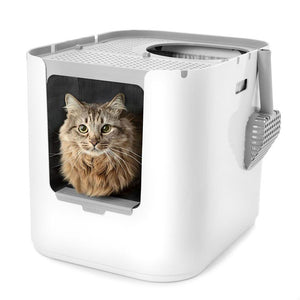
"It looks nicer than any other hooded or open option we considered."

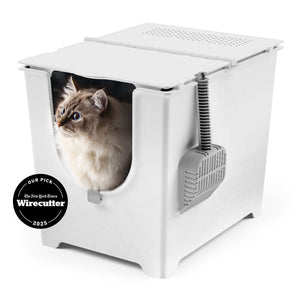
"This litter box keeps everything in, nothing gets out the sides."
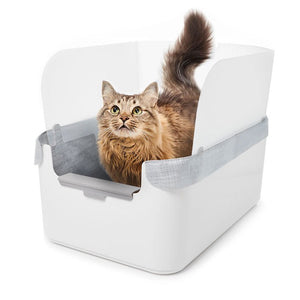
"My beautiful ragdoll cat and I both love the new Modkat Litter tray!"

